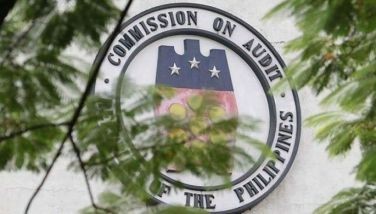Avian influenza and wild birds
CEBU, Philippines - A photo exhibit on migratory birds mounted by the Cebu Birdnuts, at the SM City Cebu North Wing from July 6 to July 12, provided answers to the following questions on “ecohealth”: Are wild birds the main cause of the spread of avian influenza or are there other major factors? How can governments and the international community respond to the emerging threat of avian flu? What is the actual role of wild birds in the spread of the virus?
The International Scientific Task Force on Avian Influenza and Wild Birds provides the following answers and recommendations:
• Risk of misinformation and adverse policies. The spread of HPAI H5N1 (Highly Pathogenic Avian Influenza) is of public concern, and receives a lot of attention in the media. Yet there remains widespread misunderstanding of the issue, especially about the different ways in which the virus might be spread. Misinformation has led to wild birds being automatically blamed. This creates political pressure for ill-advised and disproportionate policies such as the culling or harassment of wild birds and the destruction of wetland habitats. Other modes of transmission, such as the trade in poultry and poultry products, the trade in cage birds and human movements may well play a far more significant role in the spread of HPAI H5N1. In some cases, these modes of transmission have been underestimated and do not receive proportionate exposure in the media. Presentation of an accurate and balanced view which acknowledges that there are a number of factors whose relative importance can change, depending on the area or outbreak concerned, is needed.
• What are the known causes of the spread of avian influenza? The HPAI virus subtype H5N1 (referring to the specific strain) infecting poultry, other domestic animals, wildlife and humans almost certainly originated from the mutation of a low or non-pathogenic virus on poultry farms in East Asia. The virus then spread rapidly within and between farms, taking advantage of local practices in the feeding, housing, slaughtering and trade of domestic ducks, chickens and geese. Lack of hygiene, overstocking and mixing of different domestic animals greatly increases the risk of spreading the infection. Movements of people (e.g. farmers, veterinarians, and even journalists and tourists) and legal and illegal trade in caged birds are factors in the spread. As a result the virus may now be endemic in poultry of East and Southeast Asia. Globalization has led to extensive and intensive movements of people, poultry and materials around the world at an unprecedented pace which provides greater opportunity for the spread of the virus.
• Minimizing the role of wild birds in the spread of HPAI. A long-term solution would be to separate poultry operations and wetlands used by wild birds in order to avoid shared access and cross-contamination. Wild birds and poultry occurring in the same region should not use the same water areas and should not have direct contact with each other; runoff from domestic poultry operations must not pollute wetlands used by wild birds; healthy wild habitats will limit the number of water birds that enter agricultural areas; and farmers can help reduce the risks of direct transmission of poultry and cross-infection between wild and domestic birds, for example by improving hygiene and biosecurity standards in farms and during the transportation of birds.
•What conservation scientists are already doing. Significant efforts have already been made to try to understand the role of wild birds as vectors of HPAI H5N1, as well as the actual and potential impact of the virus on wild populations of conservation concern. Several countries have initiated or reinforced surveillance programs aimed at determining the prevalence of the virus in wild bird populations. Existing data on movements of wild birds are being analyzed, notably for those species considered more likely to survive the infection and able to carry the virus over significant distances. These efforts have already led to some important results, but remain insufficient to produce the complete and detailed picture of the role of wild birds in the spread of the virus needed for risk assessment. Preliminary analysis has also identified about 40 globally threatened wild bird species, the populations of which could be severely affected by HPAI H5N1.
• What governments are encouraged to do. All countries are urged to undertake transparent, structured, science-based risk assessments that make use of all available knowledge. The communication of web-links to national or other assessments via a single clearinghouse mechanism would be helpful. Governments can help to strengthen HPAI field surveillance of wild birds and enhance the understanding of wild bird migration and use of important sites during migration. To this end, the further building of national capacity to develop and implement field programs for AI surveillance and to develop waterbird monitoring would be assisted by the development of training courses and relevant capacity building, especially involving international collaboration with existing centers of expertise (such as the Food and Agriculture Organization and Wetlands International). The donor community has an important ongoing role to play in funding all these activities in developing countries. Governments are also called on to avoid unjustified and counter-productive measures such as culling of wild birds and destruction of the natural habitats on which they depend, such as wetlands. (FREEMAN)
- Latest
- Trending




















